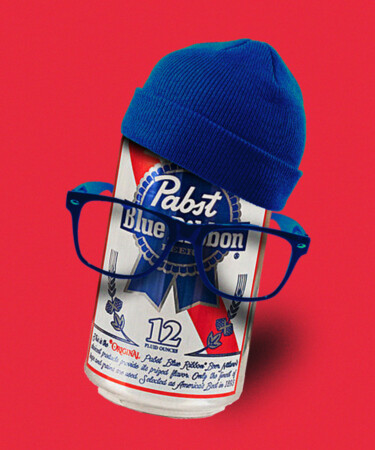PBR’s early aughts renaissance is one of the biggest enigmas in modern American beer history, and it seemed to come out of nowhere. But somehow, the brand managed to pull off a successful revival that seduced young drinkers all over the Pacific Northwest (and eventually the nation), and turned its flagship pilsner into the cool-kid beer of choice.
Ironically, the first seeds of the phenomenon were accidentally planted by the corporate bigwigs of MillerCoors when they entered a contract brewing agreement with Pabst. Unbeknownst to either company, they were setting up a distribution hiccup for a humble dive bar in Portland, Ore. That hiccup would prove to be the saving grace Pabst needed to not just survive, but thrive.
The Bottom of the Barrel
Before its comeback, the Pabst Brewing Company was knocking on death’s door. At its peak in 1978, Pabst was cranking out roughly 23 million barrels per year. But by 2001, sales were bottoming out at a mere 872,000 barrels. A little over a decade prior, former Pabst Brewing Company owner Paul Lamoanovitz passed away, and he left the keys to the brewery to… his pets. The company subsequently fell into the hands of a charitable trust that was legally obligated to attempt to sell the brewery every five years, but at the time, no one was interested in purchasing the then-dying beer brand.
Enter former Pabst marketer Neal Stewart, who boarded the sinking ship in 2000 upon his hiring in San Antonio, Texas. Concurrently, Miller was starting to take on contract brewing responsibilities on Pabst’s behalf, but Pabst didn’t have quite enough bankroll to pay Miller. So, to sweeten the deal, Pabst gave Miller a handful of its brands including Mickey’s Malt Liquor and Blitz beer. But once Miller got its hands on the Blitz portfolio, it killed the brand (although Eugene, Ore.’s Hop Valley Brewing Co. still brews Blitz’s sister beer, Henry Weinhard’s Private Reserve, to this day). Shortly thereafter, as PBR’s number continued to decline in nearly every part of the country, an unexpected spike in sales in Portland caught the attention of the brand. To see what all the buzz was about, Pabst sent Stewart on a flight to the Pacific Northwest.
When PBR Blitzed Blitz
When Stewart landed, local Pabst distributors sent him to Lutz Tavern, a dive in southeast Portland’s Woodstock neighborhood. The Lutz, which opened in 1947, is also located a stone’s throw away from Reed College — the early-aughts’ crown jewel of “granola” liberal arts schools. Given its young clientele, the tavern’s top-seller for years was its $1 cans of Blitz beer. So when MillerCoors discontinued Blitz, the bar managers went to their suppliers in search of an alternative that they could offer for the same price. That beer was Pabst Blue Ribbon, Pabst’s flagship pilsner.
“There was this absolute scorching deal on cases of PBR and kegs,” former Lutz Tavern manager Layne Martin told Willamette Week in 2015. “We were one of the few outlets in Portland that sold kegs to go, so we could sell them at a really good deal. So we started the PBR dollar-can special. We were going through hundreds of cases and dozens of kegs a week.” It wasn’t long before the Delta Cafe down the street followed suit, sending PBR cans into the hands of the American Spirit-smoking, handlebar mustache-growing hipsters of Portland. In the end, Miller’s choice to 86 Blitz from its business would unintentionally spur the humble Lutz Tavern to make PBR its new darling — and fortify its claim as the bar “known for getting a new generation hooked on PBR.”
For some reason, Blitz never took hold with the young folks of Portland quite like PBR did. Perhaps it was because Pabst’s Portland sales rep overspent his budget nearly five times over by giving Pabst neon signs to every bar that stocked the beer, according to Stewart. Perhaps it was the appeal of PBR’s old-school Americana packaging. It’s tough to say for sure, but regardless, this perfect storm allowed Pabst execs to embrace the beginnings of the pilsner’s second coming, fueling its rise as the ultimate insider beer for early-aughts outsiders.
